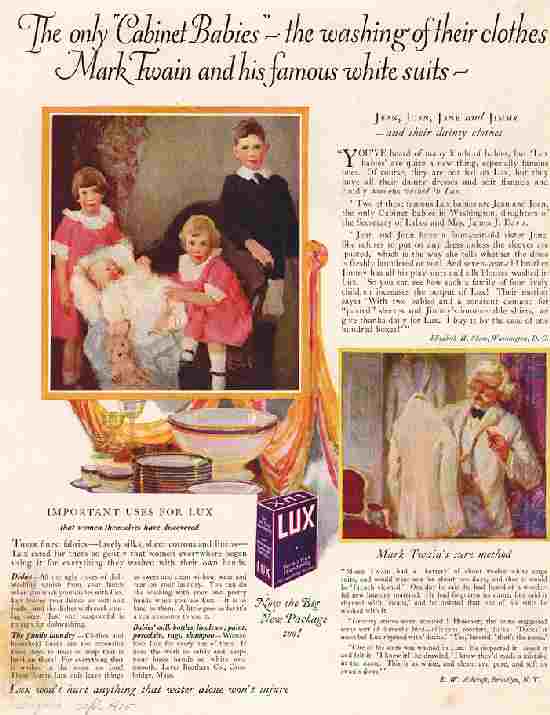
Figure 1.--This American Lux soap ad appeared in 1925. The boy wears an English style collar and jacket, but with very American white above the knee knickers.


Figure 1.--This American Lux soap ad appeared in 1925. The boy wears an English style collar and jacket, but with very American white above the knee knickers. |
This American Lux soap ad appeared in 1925. The boy wears an English style collar and jacket, but with very American white above the knee knickers. The boy was 7 years old and pictured with his sisters. Boys did wear above the knee knickers with kneesocks in the early 1920s, but long stockings were more common. The Eton collar by 1925 was declining in popularity. Clearly the ad was designed to appeal to mothers with idealized children.
The ad headline reads "The only `Cabinent Babies'--the washing of their clothes." The subheading was, "Jean, Joan, Jane, and Jimmy--and their dainty clothes." The text reads, "You've heard of many kinds of babies, but `Lux babies' are quite a new thing, especially famous ones. Of course, they are not fed on Lux, but they have all their dainty dresses and soft flannels and cuddley woolens washed in Lux.
"Two these famous Lux babies are Jean and Joan, the only Cabinent babies in Washington, daughters of the Secretary of Labor and Mrs. James J. Davis.
Jean and Joan have a 4-year old sister Jane. She refuses to put on any dress unless the sleeves are `paisted,' which is the way she tells whether the dress is freshly laundered or not! And seven-year old brother Jimmy has all his play suits and silk blouses washed in Lux. So you can see how such a family of four lively children increases the output of Lux! Their mother says: `With two babies and a constant demand for "pasted sleaves" and Jimmy's inumerable suits, we give thanks daily for Lux. I buy it by the case of one hundred boxes!'" Elizabeth H. Shaw, washington, D.C.
I didn't understand at first just what was mean by "cabinent babies". Apparently in 1925 there was no problem with an important Government official, or at least his wife, endorsing commercial products. Perhaps it was just as well, as Secretary of Labor in President Coolidge's Cabinent, Davies was certainly doing nothing to help laboring men and womem. I'm not sure who Elizabeth H. Shaw was. One important note, as these were actual children, the clothes pictured are probably clothes they actually wore rather than a fictional illustration.
One rarely sees a Lux add today. Lux soap in the 1920s, however, was heavily advertised. After World War I in the 1920s even color advertisements appeared in magazines. They were still unusual and speak of an expensive advertising campaign. Interestingly the same Lux soap was used for dishes, laundry, babies' milk bottles, linoleum, paint, porcelin, rugs, and shampoo. I find it interesting thatthe same product was used for rugs and shampoo. It should be remberedm however, that as late as the 1900 there was no laundry soap to help housewives do the family laundry which would required an entire day of work. Affluent familes had domestic staff. Mothers in less affluent familes would need help from their daughters wjo might even have to stay home from school.
Note that Jimmy at 7 still wore play suits. His mother said that he had inumerable suits along with silk blouses.
Some interesting aspects of the boys clothing include the following:
Eton collars were pervasive for dresswear in the 1910s. They declined in popularity in the 1920s, but were still considered appropriate for dress wear--especially by conservative affluent families.
Although it is difficut to tell from the inage, the boy may be wearing a proper Eton jacket, much like an English boy might have worn.
The boy's pants, however are very American looking. They are above the knee nickers--I'm noy sure that such garments were ever worn in Engkand where boys Jimmy's age would have worn socks. Knickers in the 1910s were commonly worn above the knee, especially by younger boys. There would be a constant struggle with mom's insisting that the knickers be wirn like that and the boys once off to school or away from home, pulling his knickers down below the knee.
Knickers in the 1910s were worn with long stockings. As kneesocks became more popular in the 1920s, boys with above the knee knickers woud have bare knees when wearing kneesocks.
Navigate the Boys' Historical Clothing Web Site:
[Return to the Main advertisement page]
[Introduction]
[Activities]
[Bibliographies]
[Biographies]
[Chronology]
[Clothing styles]
[Countries]
[Essay]
[Literary]
[Boys' Clothing Home]
